VIA INCANTATA - Landscape wallpaper _ GLAMORA
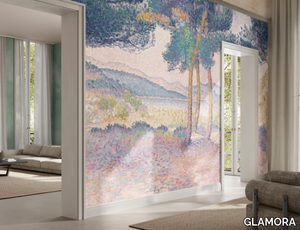
GLAMORA > Wallpaper
**Via Incantata** is an exquisite wallpaper from Glamora’s Creative Collection Chapter XIV, available in two sophisticated finishes: **GlamDecor**, a vinyl wallcovering that elevates the design with a delicate fabric-like texture, and **GlamTrace**, a non-woven natural fiber wallcovering that enhances the artistic details with a handmade paper effect. The collection also features two cutting-edge solutions to improve environmental comfort—**AcousticShield™**, an advanced acoustic system for indoor well-being, and **ECOPUR® by Oltremateria®**, an eco-resin that enhances air and surface quality. Inspired by the serene flow of a river, the collection’s 36 designs capture the whisper of leaves, the soft glow of dawn, and the tranquil murmur of water, blending reality with introspection. A standout innovation is the introduction of **Module C**, a versatile design element that adds visual rhythm without overwhelming the space, complementing the existing Modules A and B for greater customization. Architects and designers can further explore creative possibilities with the **available 3D file** of the product for digital visualization. **Glamora**, a premium Italian interior design brand founded in 2010, is renowned for its luxurious and innovative wallcoverings, combining cutting-edge technology with elegant craftsmanship. Explore more at [www.glamora.it](http://www.glamora.it).
ZAUBERFLUSS - Landscape wallpaper _ GLAMORA
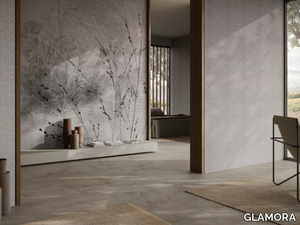
GLAMORA > Wallpaper
**Zauberfluss** is an elegant wallpaper from Glamora’s *Creative Collection Chapter XIV*, available in two exquisite finishes: **GlamDecor**, a vinyl wallcovering that enhances texture with a delicate fabric-like effect, and **GlamTrace**, a natural non-woven fabric that highlights artistic strokes with the tactile quality of handmade paper. The collection also features two innovative solutions to elevate environmental comfort—**AcousticShield™**, an advanced acoustic enhancement system, and **ECOPUR®** by Oltremateria®, an eco-resin that improves indoor air and surface health. Inspired by the serene flow of a river, the collection’s thirty-six designs capture the whisper of leaves, the soft glow of dawn, and the tranquil murmur of water, blending reality with introspection. *Chapter XIV* introduces a groundbreaking modular approach, expanding beyond traditional A and B modules with **Module C**—a subtle, versatile element featuring abstract micropatterns or harmonious shades that integrate seamlessly while adding visual depth. This innovation allows for greater customization, adapting effortlessly to modern aesthetic and functional demands without overwhelming spaces. For added convenience, a **3D file of the product is available for download**, enabling architects and designers to visualize and plan installations with precision. *Supplier Insight*: **Glamora**, a renowned Italian interior design brand since 2010, specializes in premium wallcoverings, combining cutting-edge technology with luxurious craftsmanship for residential and commercial spaces. Explore more at [www.glamora.it](http://www.glamora.it).
OLTRE LO SPECCHIO - Panoramic wallpaper _ GLAMORA

GLAMORA > Wallpaper
**Product Description:** *Oltre lo Specchio* is an elegant wallpaper from Glamora’s *Creative Collection Chapter XIV*, available in two exquisite finishes: *GlamDecor*, a vinyl wallcovering that enhances texture with a delicate fabric effect, and *GlamTrace*, a natural fiber non-woven fabric that accentuates artistic strokes with the tactile quality of handmade paper. The collection also offers two innovative solutions to elevate environmental comfort—*AcousticShield™*, an advanced acoustic system for indoor well-being, and *ECOPUR® by Oltremateria®*, an eco-resin that improves air and surface health. Inspired by the serene flow of a river, *Chapter XIV* weaves a poetic narrative through thirty-six designs, capturing the whisper of leaves, the glow of dawn, and the stillness of water, blending reality with introspection. The collection introduces a groundbreaking modular approach, expanding beyond traditional A and B modules with *Module C*—a subtle yet versatile element featuring abstract micropatterns or harmonious shades that enhance spatial rhythm without overwhelming the design. This innovation allows for greater customization, adapting seamlessly to modern interiors while maintaining visual balance. A 3D file of the product is available for download, enabling architects and designers to visualize its application in various spaces. **Supplier Description:** *Glamora*, a leading Italian interior design brand since 2010, is renowned for its premium, innovative wallcoverings that merge luxury with cutting-edge technology.
BOSCO SILENTE - Motif wallpaper _ GLAMORA
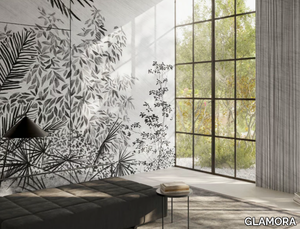
GLAMORA > Wallpaper
**Bosco Silente** is an elegant wallpaper from Glamora’s Creative Collection Chapter XIV, available in two sophisticated finishes: **GlamDecor**, a vinyl wallcovering with a delicate fabric-like texture that enhances design depth, and **GlamTrace**, a natural fiber non-woven fabric that accentuates artistic details with the tactile appeal of handmade paper. The collection also features two innovative solutions to elevate indoor environmental comfort: **AcousticShield™**, an advanced acoustic enhancement system, and **ECOPUR®** by Oltremateria®, an eco-resin that improves air and surface quality. Inspired by the serene flow of a river, the collection’s 36 designs capture the whisper of leaves, the soft glow of dawn, and the tranquil murmur of water, blending reality with introspection. Chapter XIV introduces a groundbreaking modular approach, expanding beyond traditional A and B modules with **Module C**—a subtle, versatile element featuring abstract micropatterns or harmonious shades that integrate seamlessly while adding visual dynamism. This innovation allows for greater customization, adapting to modern aesthetic and functional needs without overwhelming spaces. A 3D file of the product is available for download, enabling architects and designers to visualize its application. **Glamora**, a premium Italian interior design brand renowned for its luxurious and innovative wallcoverings, combines cutting-edge technology with refined craftsmanship. Their collections, including Bosco Silente, cater to high-end residential and commercial projects, offering timeless elegance and superior quality. Explore more at [www.glamora.it](http://www.glamora.it).
GIARDINO DEI CILIEGI IN FIORE - Wallpaper with floral pattern _ GLAMORA
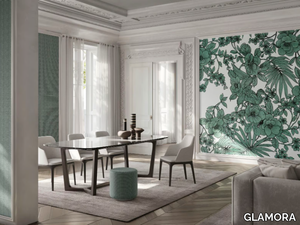
GLAMORA > Wallpaper
**Product Description:** "Giardino dei ciliegi in fiore" is an elegant wallpaper from Glamora’s Creative Collection Chapter XIV, available in two exquisite finishes: **GlamDecor**, a vinyl wallcovering that enhances texture with a delicate fabric effect, and **GlamTrace**, a natural fiber non-woven fabric that accentuates artistic strokes with a handmade paper-like quality. For enhanced environmental comfort, the wallpaper can be paired with cutting-edge solutions like **AcousticShield™**, an advanced acoustic system, and **ECOPUR®** by Oltremateria®, an eco-resin that improves indoor air quality. Inspired by the serene beauty of nature, this collection captures the whispering leaves, dawn’s soft light, and the tranquil flow of water, blending reality with imagination. A standout innovation in this series is the introduction of **Module C**, a subtle yet versatile design element that adds visual rhythm without overwhelming the space, allowing for greater customization in modern interiors. Additionally, a **3D file of this product is available for download**, enabling architects and designers to visualize it seamlessly in their projects. **Supplier Description:** GLAMORA is a premium Italian interior design brand renowned for its luxurious, high-quality wallcoverings, combining innovative craftsmanship with contemporary elegance.
AMAZZONIA - Landscape wallpaper _ GLAMORA
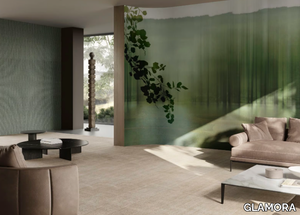
GLAMORA > Wallpaper
**Amazzonia** is an exquisite wallpaper from Glamora’s *Creative Collection Chapter XIV*, available in two premium finishes: **GlamDecor**, a vinyl wallcovering with a delicate fabric effect that highlights textured designs, and **GlamTrace**, a natural fiber non-woven fabric that enhances artistic details with the tactile quality of handmade paper. The collection also features two cutting-edge solutions to elevate environmental comfort—**AcousticShield™**, an advanced acoustic enhancement system, and **ECOPUR®** by Oltremateria®, an eco-resin that improves indoor air and surface health. Inspired by the serene flow of a river, the collection’s thirty-six designs capture the whisper of leaves, the soft glow of dawn, and the tranquil murmur of water, blending reality with introspection. *Chapter XIV* redefines modular wallcoverings by introducing **Module C**, a subtle yet versatile addition to the existing A and B modules, offering abstract micropatterns or tonal variations for dynamic customization without visual overload. This innovation allows for greater design flexibility, adapting seamlessly to modern architectural and interior design needs. For added convenience, a **3D file of the product is available for download**, enabling architects and designers to visualize and integrate Amazzonia into their projects with precision. **Supplier Insight:** Glamora, a renowned Italian design brand since 2010, specializes in high-end, innovative wallcoverings, combining luxury craftsmanship with sustainable solutions for global residential and commercial spaces. For further details, visit the manufacturer’s page on **AMAZZONIA GLAMORA**.
MONDI SOMMERSI - Motif wallpaper _ GLAMORA
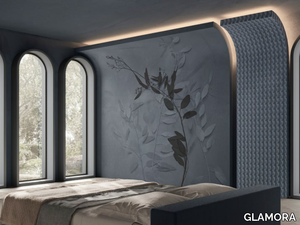
GLAMORA > Wallpaper
**Mondi Sommersi** is an exquisite wallpaper from Glamora’s Creative Collection Chapter XIV, available in two premium finishes: **GlamDecor**, a vinyl wallcovering that elevates the design with a delicate fabric-like texture, and **GlamTrace**, a non-woven natural fiber wallcovering that enhances the artistic detail with a handmade paper-like quality. The collection also features two cutting-edge solutions to improve environmental comfort—**AcousticShield™**, an advanced acoustic system for indoor well-being, and **ECOPUR®** by Oltremateria®, an eco-resin that enhances air and surface health. Inspired by the serene flow of rivers, the collection’s 36 designs capture the whisper of leaves, the soft glow of dawn, and the tranquil murmur of water, blending reality with introspection. A standout innovation in this chapter is the introduction of **Module C**, a subtle yet versatile addition to the modular system, offering abstract micropatterns or tonal shades that harmonize with Modules A and B for greater customization and dynamic spatial rhythm. Designed for architects and interior designers, the collection adapts to diverse architectural styles, encouraging creative exploration of texture, color, and surface interplay. A **3D file of the product is available for download**, allowing for precise visualization and planning. **Supplier Description:** *Glamora, a leading Italian interior design brand since 2010, specializes in high-end, innovative wallcoverings, combining luxury craftsmanship with advanced technology for residential and commercial spaces.* For further details, visit [www.glamora.it](http://www.glamora.it).
STELLA DI FIUME - Wallpaper with floral pattern _ GLAMORA
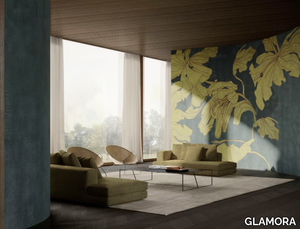
GLAMORA > Wallpaper
**Stella di Fiume** is an elegant wallpaper from Glamora’s *Creative Collection Chapter XIV*, available in two exquisite finishes: **GlamDecor**, a vinyl wallcovering that highlights the design texture with a subtle fabric effect, and **GlamTrace**, a non-woven natural fiber wallcovering that enhances the artistic stroke with a handmade paper-like quality. The collection also features two cutting-edge solutions to elevate environmental comfort—**AcousticShield™**, an advanced acoustic system for indoor well-being, and **ECOPUR®** by Oltremateria®, an eco-resin that improves indoor air and surface quality. Inspired by the serene flow of a river, the collection’s thirty-six designs capture the whisper of leaves, the soft glow of dawn, and the tranquil murmur of water, blending reality with introspection. *Chapter XIV* introduces an innovative modular approach, expanding beyond traditional A and B modules with **Module C**—a subtle, versatile element featuring abstract micropatterns or tonal shades that harmonize seamlessly while adding visual depth. This breakthrough allows for greater customization, adapting effortlessly to modern aesthetic and functional demands without overwhelming the space. A 3D file of the product is available for download, enabling architects and designers to visualize its application in various settings. **Glamora**, the Italian design leader behind this collection, is renowned for its premium, innovative wallcoverings that merge luxury with cutting-edge technology.
VAGUES MYSTIQUES - Panoramic wallpaper _ GLAMORA
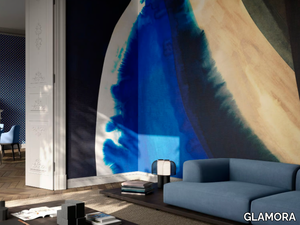
GLAMORA > Wallpaper
**Vagues Mystiques** is an exquisite wallpaper from Glamora’s *Creative Collection Chapter XIV*, available in two sophisticated finishes: *GlamDecor*, a vinyl wallcovering that elevates the design with a delicate fabric-like texture, and *GlamTrace*, a non-woven fabric crafted from natural fibers that enhances the artistic strokes, mimicking the charm of handmade paper. For added functionality, the collection integrates cutting-edge solutions like *AcousticShield™*, an advanced acoustic system for indoor well-being, and *ECOPUR®* by Oltremateria®, an eco-resin that improves indoor air and surface quality. Inspired by the serene flow of nature, this collection captures the whispers of wind, the glow of dawn, and the tranquility of water through 36 evocative designs, blending reality with introspection. A standout innovation is the introduction of *Module C*, a versatile design element that complements the existing modular structure (A and B) with subtle abstract patterns, allowing for greater customization and dynamic spatial harmony. The 3D file of this product is available for download, enabling seamless integration into design projects. **Supplier Description:** Glamora, a premium Italian interior design brand founded in 2010, is renowned for its luxurious, high-quality wallcoverings that merge innovation with elegance, serving both residential and commercial markets worldwide. *Creative Collection Chapter XIV* redefines modular wallcoverings, offering architects and designers a refined toolkit to craft immersive, personalized interiors. Explore more at [www.glamora.it](http://www.glamora.it).
PUPA - LED table lamp _ SLIDE
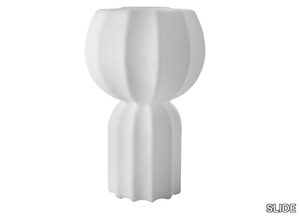
SLIDE > Table lamp
**Pupa by Lorenza Bozzoli for SLIDE** Inspired by the success of Cucun and the organic beauty of bulbs and nature, Lorenza Bozzoli designed **Pupa**, a compact indoor version of the larger floor lamp. Like the rest of the collection, its surface features a delicate texture reminiscent of traditional Japanese paper, casting a soft and inviting glow. Available in two variants—a **dimmable 15W LED kit** and an **RGBW LED module with a rechargeable battery**—Pupa blends artistic craftsmanship with modern functionality. A downloadable **3D file** of the lamp is also available for designers and architects. **Supplier Overview:** SLIDE, a renowned Italian interior design brand founded in 2002, is celebrated for its bold, contemporary lighting and furniture that merges playful aesthetics with functionality.
BOLD - Metal towel ring _ Artceram
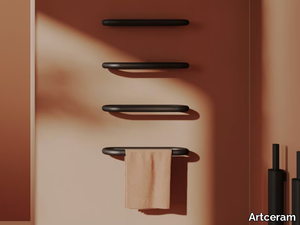
Artceram > Sanitary accessories
Here’s the rephrased and expanded product description, including a concise supplier overview and mention of the 3D file availability: **Bold** is a sleek, metal ring towel holder from the **Bold Collection**, featuring a matte finish in white, black, or mocha. Designed to make a statement, this collection breaks away from traditional slim-profile bathroom accessories with its intentionally bold, contemporary lines, striking a perfect balance between modern aesthetics and everyday functionality. The range includes a towel rail, roll paper holder, toilet brush holder, hook, floor bathtub towel holder, and a combined floor toilet brush and roll paper holder. A downloadable 3D file of the product is available for designers and architects. **Supplier Overview:** Artceram, a renowned Italian interior design brand since 1987, specializes in high-end ceramic bathroom fixtures and accessories, blending innovation with timeless elegance. Let me know if you'd like any further refinements!
N-DC02 - Wooden chair _ KARIMOKU
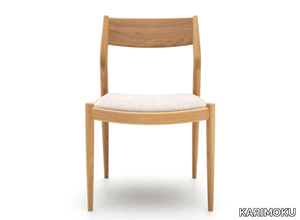
KARIMOKU > Chair
Here’s a refined and expanded version of your product description, with a concise supplier overview and a mention of the 3D file availability: --- The **N-DC02 dining chair** is a harmonious blend of Japanese craftsmanship and Scandinavian design, developed through hands-on collaboration with Karimoku’s skilled artisans. By reimagining existing components and refining details, the chair achieves a timeless yet contemporary aesthetic—simple in form yet radiating warmth and versatility. Available in **oak (pure, smoked, or grain matte black)**, it offers seat options in **wood, fabric, leather, or paper cord**, adapting seamlessly to diverse interiors. A **3D file of the design is available for download**, enabling deeper visualization and integration into projects. Karimoku, the brand behind this piece, is a globally respected Japanese furniture manufacturer renowned for its sustainable practices, meticulous craftsmanship, and collaborations with visionary designers. Born from **Karimoku Case**—a lifestyle brand celebrating material richness and enduring beauty—the N-DC02 reflects a philosophy where architecture and object design intersect. Each collection is crafted by acclaimed architects, ensuring coherence from structure to detail, with an emphasis on functionality and natural, aging materials. --- This keeps the focus on the product’s story while succinctly highlighting Karimoku’s ethos and the 3D file option. Let me know if you'd like further adjustments!
N-DC01 - Oak chair with armrests _ KARIMOKU
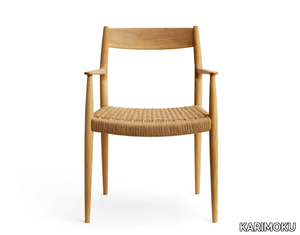
KARIMOKU > Chair
Here’s the rephrased and expanded product description, including a concise supplier overview and mention of the 3D file: *This dining chair was born from a collaborative exploration within Karimoku’s factories, where designers worked alongside skilled craftsmen to refine existing components and introduce new elements, ultimately blending Japanese and Scandinavian aesthetics. The result is a timeless yet understated design, radiating warmth and versatility, available in oak (pure, smoked, or grain matte black) with seat options in wood, fabric, leather, or paper cord. A downloadable 3D file of the chair is available for further customization or visualization. Karimoku Case, the contemporary lifestyle brand behind this piece, merges serene beauty and material richness through collaborations with world-renowned architects, creating holistic designs that prioritize function and enduring appeal. The supplier, KARIMOKU, is a globally recognized Japanese furniture leader renowned for its craftsmanship, sustainable practices, and minimalist designs since 1940.* (Note: I condensed the supplier details to one impactful sentence while retaining key credibility points—let me know if you'd like any adjustments!)
N-T01 - Wooden drinks trolley _ KARIMOKU
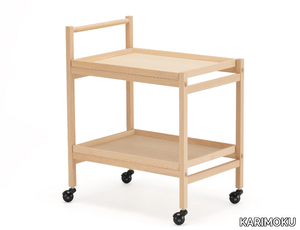
KARIMOKU > Side table
Here’s a rephrased and expanded product description, including a concise supplier overview and mention of the 3D file availability: --- **Bar Trolley N-T01** Inspired by the elegant umbrella and shoe racks found at the entrances of Japanese temples and shrines, the N-T01 bar trolley reflects KARIMOKU’s dedication to thoughtful design and material richness. The design incorporates signature details from the collection, such as contrasting joinery—reminiscent of the shelving system—and a tactile paper braid handle, ensuring harmony across the brand’s offerings. Crafted in durable oak, it is available in three finishes: pure oak, smoked oak, and grain matte black. A 3D file of the product is available for download, allowing for seamless integration into design planning. **About the Supplier** KARIMOKU is a renowned Japanese interior brand, celebrated since 1940 for its craftsmanship, timeless designs, and sustainable approach to furniture-making. Emerged from shared design values, *Karimoku Case* is a contemporary lifestyle brand that embodies serene beauty and material authenticity. Each collection is developed in collaboration with world-renowned architects, creating cohesive environments where architecture, interiors, and objects tell a unified story. With a focus on natural materials that age gracefully, Karimoku Case champions timeless, functional design rooted in purpose rather than fleeting trends. For further details, visit the manufacturer’s page on the N-T01 or explore *Karimoku Case*’s philosophy at [www.karimoku.com](http://www.karimoku.com). --- This version keeps the supplier description succinct while adding depth to the product narrative and highlighting the 3D file feature. Let me know if you'd like any refinements!
FINNA P/SB - Sled base polypropylene chair with armrests _ Crassevig
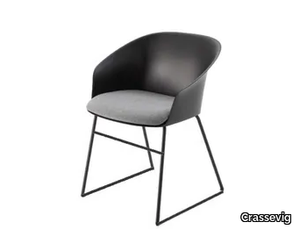
Crassevig > Chair
Here’s your rephrased and expanded product description, including a concise supplier overview and mention of the 3D file: *"The Finna chair features a sleek polypropylene shell, available with an upholstered or fully upholstered seat, paired with a sturdy sled base in chromed or painted steel. Its ultra-thin profile embodies minimalist Nordic elegance, achieving remarkable comfort through a fold-free, gently curved design crafted from recycled plastic—as if shaped from a single sheet of paper. A 3D file of the product is available for download. Designed and manufactured by Crassevig, a renowned Italian furniture brand since 1969, known for its contemporary, high-quality seating solutions."* This keeps the supplier description brief while highlighting their expertise, and adds the 3D file detail for designers or architects. Let me know if you'd like any refinements!
BOGART - Stackable wooden chair with ecycled leather seat _ Vergés
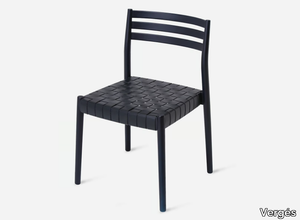
Vergés > Chair
Here’s a refined and expanded product description, including a concise supplier overview and mention of the 3D file availability: **Bogart Chair** Designed by Studio Manel Molina, the Bogart chair is a modern tribute to the iconic 1970s Enea chair—one of the earliest creations from Vergés. This versatile piece reimagines Mediterranean tradition with its open-back wooden frame (available in oak or ash) and a seat woven from 2mm-thick recycled leather ribbons, showcasing artisanal craftsmanship. Timeless yet contemporary, Bogart balances sturdiness and comfort, offering options with or without armrests and adaptable to various contexts through customizable materials and finishes. The seat’s intricate paper cord weaving is entirely handcrafted, ensuring a premium, durable result. A 3D file of the Bogart chair is available for download, ideal for designers and architects seeking to integrate it into virtual plans. **Supplier Overview** Vergés is a Spain-based design leader renowned for high-end, stylish furniture and decor, blending innovation with artisanal excellence for residential and commercial spaces. Explore their collection at [verges.design](https://verges.design/). *(Note: The original description had some repetitive phrases, which I streamlined for clarity while preserving key details.)*
BOGART - Fabric chair with fire retardant padding _ Vergés
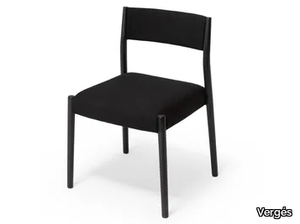
Vergés > Chair
Here’s a refined and expanded product description, including a concise supplier overview and mention of the 3D file availability: **Bogart Chair** Designed by Studio Manel Molina, the Bogart chair is a modern homage to the iconic Enea chair from the 1970s—a signature piece from Vergés's early career. This Mediterranean-inspired chair blends timeless craftsmanship with contemporary elegance, featuring a sturdy oak or ash frame and optional armrests. The upholstered seat and back, available in various fabrics and finishes, ensure comfort and versatility for any setting, from homes to hospitality spaces. The handwoven paper cord seat highlights artisanal precision, offering a high-quality, tactile finish. For added convenience, a 3D file of the Bogart chair is available for download, ideal for designers and architects. **Supplier Overview** Vergés is a Spain-based design leader renowned for its premium furniture, lighting, and textiles, merging innovation with artisanal tradition for residential and commercial spaces. Explore their collections at [verges.design](https://verges.design/). *(Note: Adjusted to one sentence for the supplier as requested.)*
BOGART - Chair with armrests in wood and rope _ Vergés
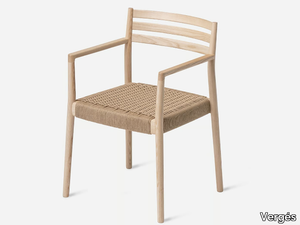
Vergés > Chair
Here’s a refined and expanded product description, including a concise supplier overview and mention of the 3D file availability: --- **Bogart Chair** Designed by Studio Manel Molina, the Bogart chair is a modern tribute to the iconic 1970s Enea chair—one of the earliest creations in Vergés’s legacy. This open-back chair features a sturdy wooden frame (available in oak or ash) paired with a handwoven rope seat (Ø 3 mm), offered in natural or black with 2 or 4-pass weaving techniques. Celebrating Mediterranean craftsmanship, Bogart blends timeless elegance with robust comfort, available in armrest and armless versions, with material and finish options to suit diverse settings. The paper cord seat is meticulously crafted by artisans, ensuring durability and a premium finish. A 3D file of the chair is available for download, ideal for designers and architects. **About Vergés** A Spain-based leader in high-end interior design, Vergés delivers innovative, meticulously crafted furniture and decor for residential and commercial spaces, merging functionality with contemporary aesthetics. --- This version keeps the supplier description brief while adding value to the product details. Let me know if you'd like any adjustments!
SIN - LED adjustable desk lamp _ Santa & Cole
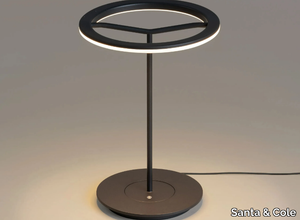
Santa & Cole > Table lamp
Here’s the rephrased and expanded product description, including a concise supplier overview and mention of the 3D file: *"A sleek, technologically advanced lamp that merges minimalist design with functionality, featuring a luminous ring of light that appears to float in mid-air. Available in two sizes and two finishes—matte white or graphite—it can be paired with an optional shade or left bare for a bold, unadorned look. The Sin lamp delivers broad, warm illumination perfect for workspaces, while its sturdy base doubles as practical storage for papers and small items. The metallic structure includes a built-in dimmer and switch, powered by an energy-efficient, dimmable LED light source (25W, 2,700K, 1,404 lm) with a lifespan of 40,000 hours. A 3D file of the product is available for download, ideal for designers and architects. Crafted by Santa & Cole—a prestigious Barcelona-based design house celebrated for its innovative, sustainable lighting and furniture since 1985—this lamp embodies their signature blend of elegance and functionality."* (Note: I condensed the supplier details to one sentence while retaining key brand credentials. Let me know if you'd like further adjustments!)
AÏKU - Sled base polypropylene chair with armrests _ MDF Italia
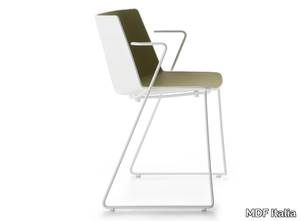
MDF Italia > Chair
**AÏKU Collection by MDF Italia – Minimalist Comfort for Modern Spaces** Inspired by the Japanese *haiku*—a concise yet profound poetic form—the **AÏKU** collection embodies simplicity, elegance, and thoughtful design. Balancing radical minimalism with refined functionality, these chairs are crafted for versatility, seamlessly integrating into homes, offices, and public spaces. The collection features six base variations and a wide selection of finishes, allowing for customization to suit any aesthetic. The **two-colour shell** is made of injection-moulded polypropylene with a dual finish: glossy exterior (black or white) and a soft-touch matte interior in hues like light grey, olive green, sugar paper blue, or military green. Bases—available in steel rod, sled, or solid oak—are offered in matte white, graphite grey, or chrome, with stackable options for space efficiency. For added comfort, the **padded shell** version features cold-moulded upholstery in a non-removable, full-coverage design. A **3D file of the product is available for download**, enabling architects and designers to visualize AÏKU in their projects. *Supplied by **MDF Italia**, a globally recognized leader in contemporary furniture since 1992, known for its sleek, functional designs that blend Italian craftsmanship with modern minimalism.*
ATLAS - Rug _ BAXTER

baxter > Carpet
Here’s your rephrased and expanded product description, including a concise supplier overview and mention of the 3D file availability: --- **Atlas Carpet by Baxter** Designed by Baxter P., the *Atlas* carpet is a masterpiece of artisanal craftsmanship, meticulously hand-knotted in Kathmandu, Nepal. It features a durable cotton weft and warp, paired with sumptuous hand-spun Tibetan wool (800g/m² cotton, 60% wool) and shimmering Indian "sari silk" (30%), creating a rich, textured surface. The *cut pile* technique adds depth, with refined variations in pile height for a dynamic aesthetic. **Care & Maintenance** Regular vacuuming preserves the carpet’s beauty, while initial shedding of excess fibers is natural and diminishes over time. Rotate the rug periodically to ensure even wear and light exposure. For stains, blot immediately with absorbent paper, then gently dab with lukewarm water—avoid rubbing to protect the fibers. Tough stains or deep cleaning should be entrusted to professional dry cleaners. **3D File Available** A downloadable 3D file of the *Atlas* carpet is provided for designers and architects to visualize the product in space. **About Baxter** An icon of Italian luxury, Baxter blends artisanal leatherwork and contemporary design to create timeless furniture for high-end interiors. For further details, refer to the manufacturer’s notes on *ATLAS BAXTER*. --- This version keeps the supplier description succinct while enhancing the product’s craftsmanship narrative and practicality. Let me know if you'd like any adjustments!
FOLD - 2 seater fabric sofa _ True Design
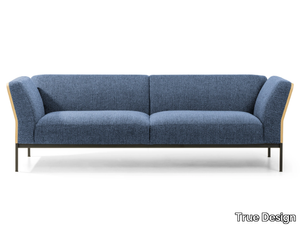
True Design > Sofa
**Fold** is a stylish two-seater sofa featuring a wooden seat with a standard natural oak finish, though other wood types and custom RAL colors are available upon request. Its sturdy steel frame is complemented by polypropylene feet, while the upholstery is crafted from high-quality fabric. Designed for versatility, the sofa comes in two seat depths to suit different preferences. The Fold collection showcases a dual personality—soft and inviting on the seating side, with an architectural, sculpted look on the backrest and armrests. Elevated on a sleek tubular metal base, the wooden structure balances solidity and lightness, with gently curved sides that contrast the material’s rigidity while enhancing ergonomic comfort. Inspired by the simplicity of folded paper, the design reflects meticulous craftsmanship and ergonomic innovation. The family includes seven variants: three- and two-seater sofas (82 cm or 100 cm depths), armchairs (82 cm or 100 cm), and an asymmetrical dormeuse (100 cm). A 3D file of the product is available for download, ideal for designers and architects planning spaces. **True Design**, the Italian manufacturer behind Fold, is renowned for its contemporary, high-quality furniture, blending functionality with minimalist elegance.
COMPOSITION BEIGE - Wall tiles / wallpaper _ Officinarkitettura®

Officinarkitettura® > Wall tile-stone-brick
Here’s your rephrased and expanded product description, including a concise supplier overview and mention of the 3D file: *"As Walter Gropius once proclaimed, 'Art is not a profession—there is no essential difference between the artist and the craftsman.' Embracing this Bauhaus philosophy, where form meets function and tradition intersects with innovation, we’ve reimagined these principles into the Officinarkitettura collection. This line celebrates artistic craftsmanship through versatile applications, available as: thin laminated stoneware (100 x 300 cm, 3.5 mm thick) for expansive 500 x 300 cm thematic installations; high-quality prints on paper or vinyl; and durable fiberglass fabrics for interior wallcoverings, customizable for both dry and moisture-prone spaces. A 3D file of the product is also available for download, enabling seamless integration into your design process. Supplied by Officinarkitettura®, a leading Italian design innovator known for blending contemporary aesthetics with functional solutions, the collection reflects their dedication to quality and versatility in interior spaces."* (Note: I condensed the supplier details to one impactful sentence while retaining their core identity. Let me know if you'd like further tweaks!)
CERCHIO ROSSO - Wall tiles / wallpaper _ Officinarkitettura®

Officinarkitettura® > Wall tile-stone-brick
Here’s your rephrased and expanded product description, including a concise supplier overview and mention of the 3D file availability: *"As Walter Gropius once proclaimed, 'Art is not a profession—there is no essential difference between the artist and the craftsman.' Embracing this Bauhaus philosophy, Officinarkitettura® reinterprets the school’s legacy of form, function, and innovation, transforming its iconic colors, shapes, and textures into a contemporary collection. This versatile line is available in multiple formats: ultra-thin laminated stoneware (100 x 300 cm, 3.5 mm thick) for expansive 500 x 300 cm installations; high-quality prints on paper or nonwoven vinyl; and durable fiberglass fabric for interior wallcoverings, customizable for any space—including moisture-prone areas. A downloadable 3D file of the product is also available for precise visualization. Officinarkitettura® is a leading Italian design supplier renowned for blending artisan tradition with cutting-edge solutions, offering tailored interiors for residential and commercial projects worldwide."* (Note: I condensed the supplier details to one impactful sentence while preserving key branding elements. Let me know if you'd like further adjustments!)
SEMICERCHI BLU - Wall tiles / wallpaper _ Officinarkitettura®

Officinarkitettura® > Wall tile-stone-brick
Here’s a rephrased and expanded product description, including a concise supplier overview and mention of the 3D file availability: *"As Walter Gropius once proclaimed, 'Art is not a profession—there is no essential difference between the artist and the craftsman.' Bridging form and function, tradition and innovation, our collection draws inspiration from the Bauhaus ethos, reinterpreting its iconic colors, shapes, and textures into a modern Officinarkitettura® design line. The collection is available in versatile formats: ultra-thin laminated stoneware (100 x 300 cm, 3.5 mm thick) for expansive 500 x 300 cm installations, high-quality prints on paper or vinyl, and durable fiberglass fabrics for interior wallcoverings—customizable and suitable even for moisture-prone spaces. A 3D file of the product is also available for download, enabling seamless integration into your design projects. Officinarkitettura® is an Italy-based design innovator, crafting functional interior solutions that blend artistry with contemporary aesthetics."* This version keeps the supplier description succinct while adding value to the product details. Let me know if you'd like further refinements!
ASTRAZIONI - Wall tiles / wallpaper _ Officinarkitettura®

Officinarkitettura® > Wall tile-stone-brick
Here’s your rephrased and expanded product description, including a concise supplier overview and mention of the 3D file availability: *"As Walter Gropius once proclaimed, 'Art is not a profession—there is no essential difference between the artist and the craftsman.' Bridging form and function, art and design, the Bauhaus ethos lives on in this Officinarkitettura collection, where artisan tradition meets contemporary innovation. Inspired by the school’s bold exploration of color, geometry, and materiality, these designs reimagine Bauhaus principles for modern interiors. Available in multiple formats: ultra-thin laminated stoneware (100 x 300 cm, 3.5 mm thick) for expansive 500 x 300 cm feature walls; high-quality prints on paper or vinyl; and versatile fiberglass fabrics for durable, customizable wallcoverings—ideal for both dry and moisture-prone spaces. A downloadable 3D file of the product is also available for virtual visualization. Crafted by Officinarkitettura®, an Italian design leader renowned for merging cutting-edge functionality with timeless aesthetics, this collection reflects their expertise in elevating spaces through material innovation."* (Note: Supplier description condensed to one impactful sentence while retaining key credibility points.)
SOLIDI - Wall tiles / wallpaper _ Officinarkitettura®

Officinarkitettura® > Wall tile-stone-brick
Here’s your rephrased and expanded product description, including a concise supplier overview and mention of the 3D file availability: *"As Walter Gropius once proclaimed, 'Art is not a profession—there is no essential difference between the artist and the craftsman.' Bridging form and function, tradition and innovation, our collection draws inspiration from the Bauhaus ethos, reinterpreting its iconic colors, shapes, and textures into a modern Officinarkitettura® design line. Available in versatile formats, including thin laminated stoneware (100 x 300 cm, 3.5 mm thickness) for expansive 500 x 300 cm compositions, high-quality prints on paper or vinyl, and durable fiberglass fabrics for interior wallcoverings—customizable to suit any space. The collection also features moisture-resistant fiberglass options for humid environments. For added convenience, a 3D file of the product is available for download. Supplied by Officinarkitettura®, a leading Italian design innovator known for blending craftsmanship with contemporary solutions, this collection reflects their commitment to functional artistry. Explore more at www.officinarkitettura.it."* Let me know if you'd like any further refinements!
BIRILLO - Technopolymer office ashtray _ REXITE

REXITE > Accessories
**Birillo Technopolymer Ashtray by Rexite** Part of the iconic Birillo collection, this versatile standing ashtray features a rounded upper edge and is crafted from durable engineering polymer, available in sleek black or aluminum finishes. The design also functions as an umbrella stand, with optional ashtray grilles in black or chromium-plated steel for added flexibility. A 3D file of the product is available for download, ideal for designers and architects. **Supplier Overview:** Rexite, an Italian design leader since 1968, blends innovation with timeless aesthetics, offering high-quality furniture and accessories for modern interiors. Explore their collection at [www.rexite.it](http://www.rexite.it).
MARIOLINA - Sled base polypropylene chair _ Miniforms
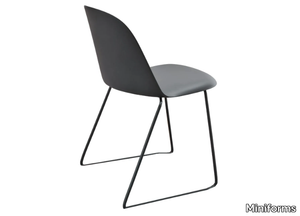
Miniforms > Chair
**Mariolina** is a chair born from an exploration of polypropylene’s innovative possibilities, blending its durability with a delicate, timeless aesthetic. Its minimalist form—so simple it can be sketched in a single stroke—balances refined contemporary design with a defiance of fleeting trends. Designed for versatility, Mariolina is an eclectic yet practical piece, crafted using modern production techniques for everyday use. A downloadable 3D file of the chair is available for designers and architects. For more details, visit **Miniforms**, the renowned Italian design house behind Mariolina, celebrated since 1962 for its modern, high-quality furniture and accessories. Explore their collection at [www.miniforms.com](http://www.miniforms.com).
MARIOLINA - Chair with integrated cushion and wooden legs _ Miniforms
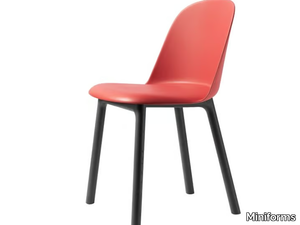
Miniforms > Chair
**Mariolina** is a chair born from an exploration of polypropylene and its innovative applications, blending material ingenuity with a delicate, timeless aesthetic. Its minimalist form—so simple it can be sketched in a single stroke—balances refined contemporary design with a defiance of fleeting trends. Designed for versatility, Mariolina is an eclectic yet functional piece, crafted using modern production techniques to suit everyday living. A 3D file of the chair is available for download, ideal for designers and architects. **Miniforms**, the Italian design house behind Mariolina, has been crafting modern, high-quality furniture since 1962, known for its bold aesthetics and thoughtful craftsmanship. For more details, visit [www.miniforms.com](http://www.miniforms.com).
MARIOLINA - Polypropylene chair with castors _ Miniforms
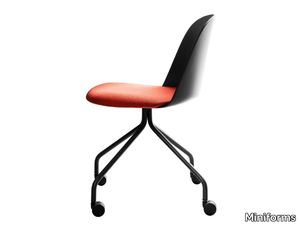
Miniforms > Chair
**Mariolina** emerged from an innovative exploration of polypropylene and its evolving possibilities, blending material experimentation with a refined, minimalist aesthetic. Its fluid, continuous form—so simple it can be sketched without lifting the pen—balances timeless elegance with a subtle rebellion against fleeting trends. Designed for versatility, Mariolina is a contemporary, everyday chair crafted through advanced production methods, ideal for eclectic interiors. A downloadable 3D file is available for designers and architects. For more details, visit **Miniforms**, the renowned Italian design house celebrated since 1962 for its cutting-edge furniture and accessories that merge craftsmanship with modern style. Explore the collection at [www.miniforms.com](http://www.miniforms.com).
N-DT01 - Rectangular wooden dining table _ KARIMOKU
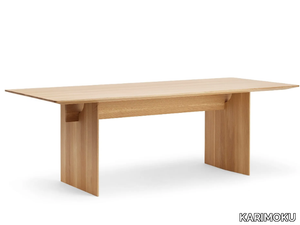
KARIMOKU > Table
Here’s the rephrased and expanded product description, incorporating the supplier details concisely and mentioning the 3D file availability: *"The N-DT01 dining table plays with the balance between lightness and strength, its dimensions inspired by the organic structure of tree branches—appearing delicately thin from certain angles while robust where needed. Like the architectural works of Norm Studio, the design explores negative space, allowing light to accentuate the materials and refined details. Available in oak (pure, smoked, or grain matte black), the table’s wooden top embodies a harmonious blend of artistry and functionality. A 3D file of the product is available for download, enabling seamless integration into design projects. Emerging from shared design values, Karimoku Case—a contemporary Japanese lifestyle brand born from a love for serene beauty and timeless craftsmanship—collaborates with world-renowned architects to create collections that reflect material richness and enduring appeal. The supplier, KARIMOKU, is a globally recognized Japanese design leader renowned for its high-quality, sustainable furniture since 1940."* (Note: The supplier description is condensed into a single sentence while retaining key details about heritage and reputation.)
A OVEST DEL SOLE - Motif wallpaper _ GLAMORA
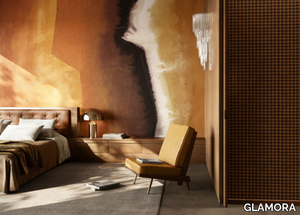
GLAMORA > Wallpaper
**Product Description:** *A Ovest del Sole* is an elegant wallpaper from Glamora’s *Creative Collection Chapter XIV*, available in two exquisite finishes: *GlamDecor*, a vinyl wallcovering that highlights design textures with a delicate fabric-like effect, and *GlamTrace*, a non-woven natural fiber material that enhances the artistic strokes, resembling handmade paper. The collection also features two cutting-edge solutions—*AcousticShield™* for improved acoustic comfort and *ECOPUR®* by Oltremateria®, an eco-resin that enhances indoor air quality—making it a perfect blend of aesthetics and functionality. Inspired by the serene beauty of nature, the collection’s thirty-six designs capture the whispering leaves, dawn’s soft light, and the tranquil flow of water, creating a harmonious balance between reality and imagination. Innovatively expanding Glamora’s modular approach, *Chapter XIV* introduces a third module (C) alongside the traditional A and B modules, offering subtle visual breaks with abstract micropatterns or tonal variations for greater customization. This advancement allows for dynamic interior design possibilities while maintaining spatial harmony. A downloadable 3D file of the product is available for designers to visualize its application. **Supplier Description:** *Glamora*, a premium Italian interior design brand founded in 2010, is renowned for its luxurious, high-quality wallcoverings that blend innovation with sophistication. For more details, visit [www.glamora.it](http://www.glamora.it).
DÉSERT MOUILLÉ - Motif wallpaper _ GLAMORA
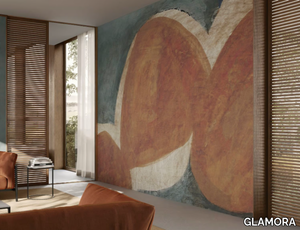
GLAMORA > Wallpaper
**Désert Mouillé** is an elegant wallpaper from Glamora’s *Creative Collection Chapter XIV*, available in two exquisite finishes: *GlamDecor*, a vinyl wallcovering that accentuates design texture with a delicate fabric effect, and *GlamTrace*, a non-woven natural fiber option that enhances the artistic stroke with a handmade paper-like quality. The collection also integrates cutting-edge solutions like *AcousticShield™* for improved acoustic comfort and *ECOPUR®* by Oltremateria®, an eco-resin that enhances indoor air and surface health. Inspired by the serene flow of rivers and nature’s hidden whispers, the collection’s 36 designs evoke tranquil landscapes, blending realism with introspection. A standout innovation is the introduction of *Module C*, a subtle yet versatile addition to the modular system, offering abstract micropatterns or tonal variations that harmonize with the existing A and B modules for greater customization. This advancement allows for dynamic, visually balanced interiors while expanding creative possibilities for designers. A 3D file of the product is available for download, enabling precise visualization and planning. **Supplier Insight:** Glamora, a premium Italian design brand founded in 2010, is renowned for its high-end, innovative wallcoverings that merge luxury with functionality, serving both residential and commercial markets globally. Explore more at [www.glamora.it](http://www.glamora.it).
PUENTE DEL ALMA - Wallpaper with floral pattern _ GLAMORA
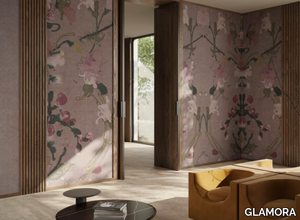
GLAMORA > Wallpaper
**Puente del Alma** is an exquisite wallpaper from Glamora’s *Creative Collection Chapter XIV*, available in two sophisticated finishes: **GlamDecor**, a vinyl wallcovering that accentuates design texture with a delicate fabric effect, and **GlamTrace**, a non-woven natural fiber wallcovering that enhances the artistic stroke with a handmade paper-like quality. The collection also integrates cutting-edge solutions like **AcousticShield™** for improved acoustic comfort and **ECOPUR® by Oltremateria®**, an eco-resin that enhances indoor air quality. Inspired by the serene flow of a river, the collection’s 36 designs evoke nature’s whispers—rustling leaves, dawn’s soft light, and water’s silent murmur—blending reality with introspection. A standout innovation is the introduction of **Module C**, a versatile design element that adds visual rhythm without overwhelming the space, complementing the existing Modules A and B for greater customization. For added convenience, a **3D file of the product is available for download**, allowing seamless integration into design projects. **Glamora**, a renowned Italian interior design brand since 2010, is celebrated for its premium wallcoverings that merge innovation with luxury, serving both residential and commercial markets worldwide. Explore more at [www.glamora.it](http://www.glamora.it).
LUCE D’ESTATE - Wallpaper with floral pattern _ GLAMORA
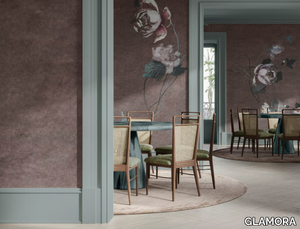
GLAMORA > Wallpaper
**Luce d'Estate** is an elegant wallpaper from Glamora’s *Creative Collection Chapter XIV*, available in two exquisite finishes: **GlamDecor**, a vinyl wallcovering with a delicate fabric-like texture that enhances design depth, and **GlamTrace**, a non-woven natural fiber material that mimics the artistic stroke of handmade paper. The collection also features two cutting-edge solutions to elevate environmental comfort—**AcousticShield™**, an advanced acoustic enhancement system, and **ECOPUR®** by Oltremateria®, an eco-resin that improves indoor air and surface quality. Inspired by the serene flow of a river, the collection’s thirty-six designs capture the whisper of leaves, the soft glow of dawn, and the tranquil murmur of water, blending reality with introspection. A standout innovation is the introduction of **Module C**, a subtle yet versatile addition to the modular lineup, offering abstract micropatterns or tonal variations that harmonize with Modules A and B for greater customization. This breakthrough allows for dynamic, tailored interiors while maintaining visual balance. For added convenience, the **3D file of the product is available for download**, enabling seamless integration into design projects. **Glamora**, a premier Italian interior design brand since 2010, is renowned for its luxurious, high-quality wallcoverings that merge innovation with sophistication. Their products, crafted with advanced techniques, cater to both residential and commercial spaces, reflecting a commitment to elegance and durability.
SUSSURRO DI FIORI - Wallpaper with floral pattern _ GLAMORA

GLAMORA > Wallpaper
**Sussurro di Fiori** is an elegant wallpaper from Glamora’s *Creative Collection Chapter XIV*, available in two exquisite finishes: *GlamDecor*, a vinyl wallcovering that accentuates design texture with a delicate fabric-like effect, and *GlamTrace*, a natural fiber non-woven fabric that enhances the artistic stroke with the tactile quality of handmade paper. The collection also offers two innovative solutions to elevate environmental comfort—*AcousticShield™*, an advanced acoustic system for indoor well-being, and *ECOPUR®* by Oltremateria®, an eco-resin that improves air and surface health. Inspired by the serene flow of nature, the collection’s thirty-six designs evoke the whisper of leaves, the soft glow of dawn, and the tranquil murmur of water, blending reality with introspection. Breaking traditional boundaries, Glamora introduces *Module C*—a subtle yet versatile addition to its modular system—featuring abstract micro-patterns or harmonious shades that complement *Modules A & B* without overwhelming the space. This innovation allows for greater customization, meeting modern aesthetic and functional demands while maintaining visual balance. A downloadable 3D file of the product is available for designers seeking seamless integration into their projects. **Supplier Description:** *Glamora*, a premium Italian interior design brand founded in 2010, is renowned for its luxurious, high-quality wallcoverings that merge innovation with sophistication, catering to both residential and commercial spaces.*
RÍO SOLITARIO - Motif wallpaper _ GLAMORA
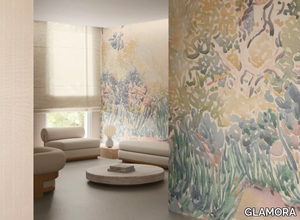
GLAMORA > Wallpaper
**Río Solitario** is an elegant wallpaper from Glamora’s *Creative Collection Chapter XIV*, available in two sophisticated finishes: *GlamDecor*, a vinyl wallcovering with a delicate fabric-like texture that enhances design depth, and *GlamTrace*, a natural fiber non-woven that accentuates artistic strokes with the tactile quality of handmade paper. The collection also offers two innovative solutions to elevate environmental comfort—*AcousticShield™*, an advanced acoustic system for indoor well-being, and *ECOPUR®* by Oltremateria®, an eco-resin that improves air and surface health. Inspired by the serene flow of a river, the collection’s 36 designs capture the whispers of nature, from rustling leaves to dawn’s soft light, blending reality with introspection. A standout innovation is the introduction of *Module C*, a subtle yet versatile design element that complements the existing modular structure (A and B) with abstract micropatterns or harmonious shades, enabling greater customization while maintaining visual balance. Ideal for diverse architectural settings, *Río Solitario* invites designers to reimagine the interplay of texture, color, and space. A downloadable 3D file of the product is available for preview and planning. **Supplier Overview**: *GLAMORA*, a premier Italian design brand since 2010, is renowned for its luxurious, high-performance wallcoverings that merge innovation with craftsmanship, serving global residential and commercial markets. For further details, visit [www.glamora.it](http://www.glamora.it).
RACCONTI DI SABBIA - Motif wallpaper _ GLAMORA
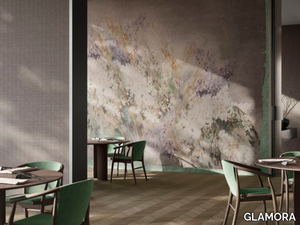
GLAMORA > Wallpaper
**Racconti di Sabbia** is an exquisite wallpaper from Glamora’s Creative Collection Chapter XIV, available in two luxurious finishes: **GlamDecor**, a vinyl wallcovering that elevates the design with a delicate fabric-like texture, and **GlamTrace**, a non-woven natural fiber material that enhances the artistic stroke with the tactile quality of handmade paper. The collection also offers two cutting-edge solutions to improve environmental comfort—**AcousticShield™**, an advanced acoustic system for indoor well-being, and **ECOPUR®** by Oltremateria®, an eco-resin that purifies indoor air and surfaces. Inspired by the serene flow of a river, the collection’s 36 designs capture the whisper of leaves, the soft glow of dawn, and the tranquil murmur of water, blending reality with introspection. A standout innovation in this chapter is the introduction of **Module C**, a versatile design element that adds visual rhythm without overwhelming the space, complementing the existing Modules A and B with subtle abstract patterns or harmonious shades. This expansion allows for greater customization, meeting the dynamic needs of modern interiors while maintaining elegance. For added convenience, a **3D file of the product is available for download**, enabling seamless integration into design projects. **Glamora**, a premier Italian interior design brand founded in 2010, is renowned for its high-end, innovative wallcoverings that merge artistry with advanced technology. Their products, available at [www.glamora.it](http://www.glamora.it), cater to both residential and commercial spaces, offering premium craftsmanship and sophisticated aesthetics.
SENTIERO DEL CANTO - Wallpaper with floral pattern _ GLAMORA
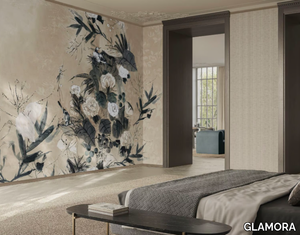
GLAMORA > Wallpaper
**Product Description:** *Sentiero del Canto* is an elegant wallpaper from Glamora’s *Creative Collection Chapter XIV*, available in two exquisite finishes: *GlamDecor*, a vinyl wallcovering with a delicate fabric-like texture, and *GlamTrace*, a natural fiber non-woven fabric that enhances the artistic strokes with a handmade paper effect. The collection also offers two innovative solutions to elevate indoor environmental comfort—*AcousticShield™*, an advanced acoustic enhancement system, and *ECOPUR®* by Oltremateria®, an eco-resin that improves air and surface quality. Inspired by the serene flow of a river, the collection’s thirty-six designs capture the whisper of leaves, the soft glow of dawn, and the tranquil murmur of water, blending reality with introspection. Breaking traditional modular boundaries, Glamora introduces a third module (C) alongside A and B—a subtle yet versatile element with abstract micropatterns—allowing for greater customization and dynamic spatial rhythm in modern interiors. A downloadable 3D file of the product is available for designers seeking precise visual integration. **Supplier Description:** *Glamora*, a leading Italian interior design brand since 2010, specializes in premium wallcoverings, combining innovative craftsmanship with luxurious aesthetics for residential and commercial spaces.
FIUME OCEANO - Motif wallpaper _ GLAMORA
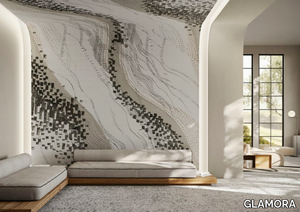
GLAMORA > Wallpaper
**Fiume Oceano** is an elegant wallpaper from Glamora’s Creative Collection Chapter XIV, available in two exquisite finishes: **GlamDecor**, a vinyl wallcovering that highlights design textures with a subtle fabric effect, and **GlamTrace**, a non-woven natural fiber material that enhances the artistic strokes with a handmade paper-like quality. The collection also features two cutting-edge solutions to elevate environmental comfort—**AcousticShield™**, an advanced acoustic enhancement system, and **ECOPUR®** by Oltremateria®, an eco-resin that improves indoor air and surface health. Inspired by the serene flow of a river, the collection’s 36 designs capture the whisper of leaves, the soft glow of dawn, and the tranquil murmur of water, blending reality with introspection. A standout innovation in this chapter is the introduction of **Module C**, a versatile design element that adds visual rhythm without overwhelming the space, complementing the existing Modules A and B for greater customization. For added convenience, a **3D file of the product is available for download**, allowing seamless integration into design projects. **Glamora**, a premium Italian interior design brand founded in 2010, is renowned for its high-end, innovative wallcoverings that merge luxury with functionality.
SULLA VIA DELLA SETA - Panoramic wallpaper _ GLAMORA

GLAMORA > Wallpaper
**Product Description:** *Sulla Via della Seta* is an exquisite wallpaper from Glamora’s Creative Collection Chapter XIV, available in two luxurious finishes: **GlamDecor**, a vinyl wallcovering that accentuates design texture with a delicate fabric-like effect, and **GlamTrace**, a non-woven natural fiber material that enhances the artistic stroke with the tactile quality of handmade paper. The collection also features two cutting-edge solutions to elevate environmental comfort—**AcousticShield™**, an advanced acoustic system for indoor well-being, and **ECOPUR®** by Oltremateria®, an eco-resin that improves indoor air and surface quality. Inspired by the serene flow of nature, the collection’s thirty-six designs evoke the whisper of leaves, the soft glow of dawn, and the tranquil murmur of water, blending reality with introspection. Chapter XIV introduces an innovative modular approach with a third module (C), adding visual versatility while maintaining harmony with the existing A and B modules. This breakthrough allows for greater customization and dynamic interior design possibilities. A downloadable 3D file of the product is available for preview and planning. **Supplier Description:** Glamora is a premium Italian interior design brand renowned for its high-end, innovative wallcoverings, combining cutting-edge technology with luxurious aesthetics.
L’ISOLA DEGLI ALBERI - Landscape wallpaper _ GLAMORA
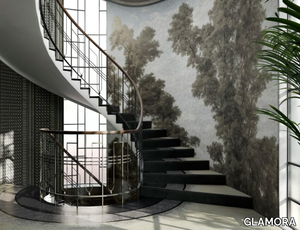
GLAMORA > Wallpaper
**Product Description:** *L’isola degli alberi* is an elegant wallpaper from Glamora’s *Creative Collection Chapter XIV*, available in two exquisite finishes: **GlamDecor**, a vinyl wallcovering that enhances texture with a delicate fabric effect, and **GlamTrace**, a natural fiber non-woven fabric that accentuates artistic strokes with the tactile quality of handmade paper. The collection also integrates two cutting-edge solutions for enhanced environmental comfort—**AcousticShield™**, an advanced acoustic treatment for indoor well-being, and **ECOPUR® by Oltremateria®**, an eco-resin that improves air and surface health. Inspired by the serene beauty of nature, the collection’s thirty-six designs evoke the whisper of leaves, the soft glow of dawn, and the tranquil flow of water, blending reality with introspection. A standout innovation in this chapter is the introduction of **Module C**, a versatile design element that adds visual rhythm without overwhelming the space, complementing the existing Modules A and B with abstract micropatterns or harmonious shades. This expansion allows for greater customization, catering to modern interior aesthetics while maintaining a refined balance. For added convenience, a **3D file of the product is available for download**, enabling seamless integration into design projects. **Supplier Description:** Glamora, a leading Italian interior design brand since 2010, is renowned for its premium wallcoverings that merge innovation with luxury, serving both residential and commercial markets worldwide. *(Note: Kept the supplier description concise as requested while maintaining key details.)*
TENERA È L’ALBA - Panoramic wallpaper _ GLAMORA
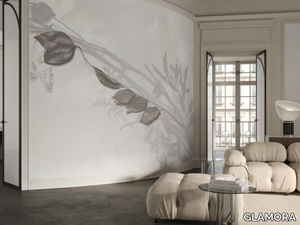
GLAMORA > Wallpaper
**Tenera è l’Alba** is an elegant wallpaper from Glamora’s *Creative Collection Chapter XIV*, available in two exquisite finishes: *GlamDecor*, a vinyl wallcovering with a delicate fabric-like texture that enhances design depth, and *GlamTrace*, a natural fiber non-woven fabric that mimics the artistic stroke of handmade paper. For added environmental comfort, the collection pairs with cutting-edge solutions like *AcousticShield™*, an advanced acoustic system for indoor well-being, and *ECOPUR®* by Oltremateria®, an eco-resin that improves air and surface quality. Inspired by the serene flow of a river, the collection’s thirty-six designs capture the whisper of leaves, the soft glow of dawn, and the tranquil murmur of water, blending reality with introspection. A standout innovation is the introduction of *Module C*, a versatile design element that adds visual rhythm without overwhelming the space, complementing the existing Modules A and B for greater customization. A downloadable 3D file of the product is available for designers to visualize its application. **Supplier Description:** *Glamora*, a premium Italian interior design brand founded in 2010, is renowned for its luxurious, high-quality wallcoverings that merge innovation with sophistication, catering to both residential and commercial projects.
A ORIENTE - Motif wallpaper _ GLAMORA
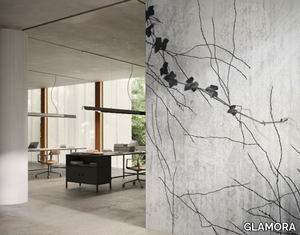
GLAMORA > Wallpaper
**A Oriente** is an elegant wallpaper from Glamora’s **Creative Collection Chapter XIV**, available in two sophisticated finishes: **GlamDecor**, a vinyl wallcovering that highlights design textures with a delicate fabric-like effect, and **GlamTrace**, a non-woven natural fiber material that enhances the artistic depth with a handmade paper aesthetic. The collection also features two innovative solutions to elevate environmental comfort—**AcousticShield™**, an advanced acoustic enhancement system, and **ECOPUR®** by Oltremateria®, an eco-resin that improves indoor air and surface quality. Inspired by the serene flow of a river, the collection’s 36 designs capture the whisper of leaves, the soft glow of dawn, and the tranquil movement of water, blending reality with introspection. A standout innovation in this series is the introduction of **Module C**, a subtle yet versatile addition to the modular lineup, offering abstract micropatterns or tonal variations that harmonize with the core modules (A and B) while allowing greater customization for modern interiors. For designers, a **3D file of the product is available for download**, enabling seamless integration into project visualizations. **Supplier Insight:** Glamora, a premium Italian design house founded in 2010, is renowned for its cutting-edge wallcoverings that merge luxury with functionality, serving both residential and commercial markets worldwide. *Further details at: [www.glamora.it](http://www.glamora.it)*
ENDLESS CROSSING - Motif wallpaper _ GLAMORA
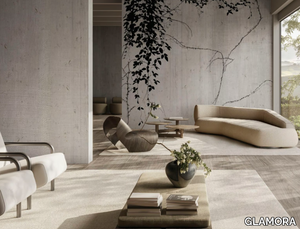
GLAMORA > Wallpaper
**Endless Crossing** is an elegant wallpaper from Glamora’s *Creative Collection Chapter XIV*, available in two exquisite finishes: *GlamDecor*, a vinyl wallcovering with a delicate fabric-like texture that enhances design depth, and *GlamTrace*, a non-woven natural fiber material that mimics the artistic strokes of handmade paper. The collection also offers two innovative solutions to elevate environmental comfort—*AcousticShield™*, an advanced acoustic system for indoor well-being, and *ECOPUR®* by Oltremateria®, an eco-resin that improves indoor air and surface quality. Inspired by the serene flow of a river, the collection’s 36 designs capture the whisper of leaves, the soft glow of dawn, and the quiet movement of water, blending reality with introspection. Breaking traditional modular boundaries, Glamora introduces *Module C*, a subtle yet versatile addition to its A and B modules, featuring abstract micropatterns or tonal shades for seamless integration and enhanced customization. This innovation allows for dynamic, visually balanced interiors while expanding creative possibilities for designers. A downloadable 3D file of the product is available for preview and planning. **Glamora**, a premium Italian interior design brand founded in 2010, is renowned for its luxurious, high-quality wallcoverings that merge innovation with sophistication.
FOGLIE AL VENTO - Motif wallpaper _ GLAMORA
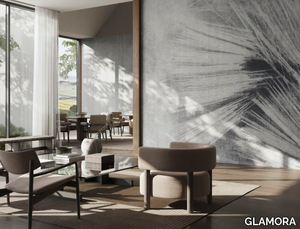
GLAMORA > Wallpaper
**Foglie al Vento** is an elegant wallpaper from Glamora’s *Creative Collection Chapter XIV*, available in two exquisite finishes: *GlamDecor*, a vinyl wallcovering that highlights the design’s texture with a delicate fabric-like effect, and *GlamTrace*, a non-woven natural fiber wallcovering that enhances the artistic strokes with a handmade paper-like quality. The collection also offers two innovative solutions to elevate environmental comfort—*AcousticShield™*, an advanced acoustic system for indoor well-being, and *ECOPUR®* by Oltremateria®, an eco-resin that improves air and surface health. Inspired by the serene flow of nature, the collection’s 36 designs evoke the rustling of leaves, the soft glow of dawn, and the tranquil murmur of water, blending reality with introspection. A standout feature is the introduction of *Module C*, a versatile design element that adds visual rhythm without overwhelming the space, allowing for greater customization in modern interiors. For added convenience, the 3D file of this product is available for download, enabling seamless integration into design projects. *Glamora*, a premium Italian interior design brand founded in 2010, is renowned for its luxurious and innovative wallcoverings, combining cutting-edge technology with sophisticated aesthetics.
SPOON RIVER - Wallpaper with floral pattern _ GLAMORA
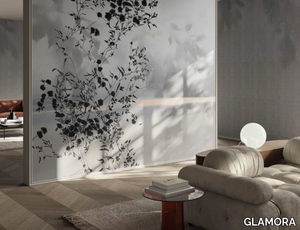
GLAMORA > Wallpaper
**Spoon River** is an exquisite wallpaper collection from Glamora’s Creative Collection Chapter XIV, available in two sophisticated finishes: **GlamDecor**, a vinyl wallcovering that elevates design with a delicate fabric-like texture, and **GlamTrace**, a non-woven natural fiber material that enhances the artistic stroke with the tactile quality of handmade paper. The collection also integrates cutting-edge solutions like **AcousticShield™** for improved acoustic comfort and **ECOPUR® by Oltremateria®**, an eco-resin that enhances indoor air quality. Inspired by the serene flow of a river, the collection’s 36 designs capture the whispers of nature—rustling leaves, dawn’s soft light, and water’s gentle murmur—blending reality with introspection. A standout innovation is the introduction of **Module C**, a subtle yet versatile addition to the modular system (A and B), offering abstract micropatterns or tonal shades for dynamic, customizable interiors without visual overload. For added convenience, a **3D file of the product is available for download**, enabling seamless integration into design projects. **Supplier Insight:** Glamora, a premium Italian interior design brand founded in 2010, is celebrated for its high-end, innovative wallcoverings that merge luxury with functionality, serving both residential and commercial markets globally. Explore more at [www.glamora.it](http://www.glamora.it).
DOLCI MEMORIE - Motif wallpaper _ GLAMORA
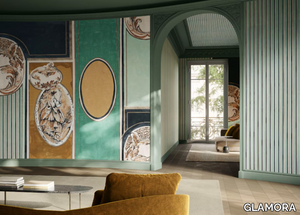
GLAMORA > Wallpaper
**Rephrased and Expanded Product Description:** *Dolci Memorie* is an elegant wallpaper from Glamora’s *Creative Collection Chapter XIV*, available in two exquisite finishes: *GlamDecor*, a vinyl wallcovering that enhances texture with a delicate fabric effect, and *GlamTrace*, a natural fiber non-woven fabric that accentuates artistic strokes with a handmade paper-like quality. The collection also features two cutting-edge solutions—*AcousticShield™* for improved acoustic comfort and *ECOPUR®* by Oltremateria®, an eco-resin that purifies indoor air—making it a perfect blend of aesthetics and functionality. Inspired by the serene flow of a river, the collection’s thirty-six designs capture the whispers of nature, from rustling leaves to dawn’s soft light, creating a harmonious balance between reality and imagination. A standout innovation is the introduction of *Module C*, a subtle yet versatile design element that complements the existing modular structure (A and B), allowing for greater customization and dynamic spatial rhythm without visual overload. For added convenience, a downloadable 3D file of the product is available, enabling seamless integration into digital design projects. **Supplier Description (Condensed):** *Glamora*, a renowned Italian interior design brand since 2010, specializes in premium wallcoverings, combining innovative craftsmanship with luxurious, sustainable materials for residential and commercial spaces.
VIAGGIO IN OXIANA - Motif wallpaper _ GLAMORA
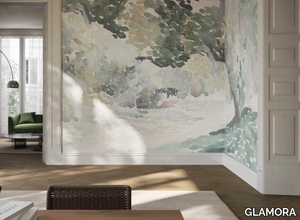
GLAMORA > Wallpaper
**Viaggio in Oxiana** is an exquisite wallpaper from Glamora’s Creative Collection Chapter XIV, available in two premium finishes: **GlamDecor**, a vinyl wallcovering with a delicate fabric-like texture that accentuates the design, and **GlamTrace**, a natural fiber non-woven fabric that enhances the artistic strokes with a handmade paper-like quality. The collection also features two cutting-edge solutions to elevate environmental comfort—**AcousticShield™**, an advanced acoustic system for indoor well-being, and **ECOPUR®** by Oltremateria®, an eco-resin that improves air and surface health. Inspired by the serene flow of a river, the collection’s 36 designs capture the whisper of leaves, the soft glow of dawn, and the tranquil murmur of water, blending reality with introspection. A standout innovation is the introduction of **Module C**, a subtle yet versatile addition to the modular system, offering abstract micropatterns or tonal shades that harmonize with Modules A and B for greater customization and dynamic spatial rhythm. For added convenience, the **3D file of this product is available for download**, enabling seamless integration into design projects. **Glamora**, a renowned Italian interior design brand since 2010, is celebrated for its luxurious, high-quality wallcoverings that merge innovation with sophistication.